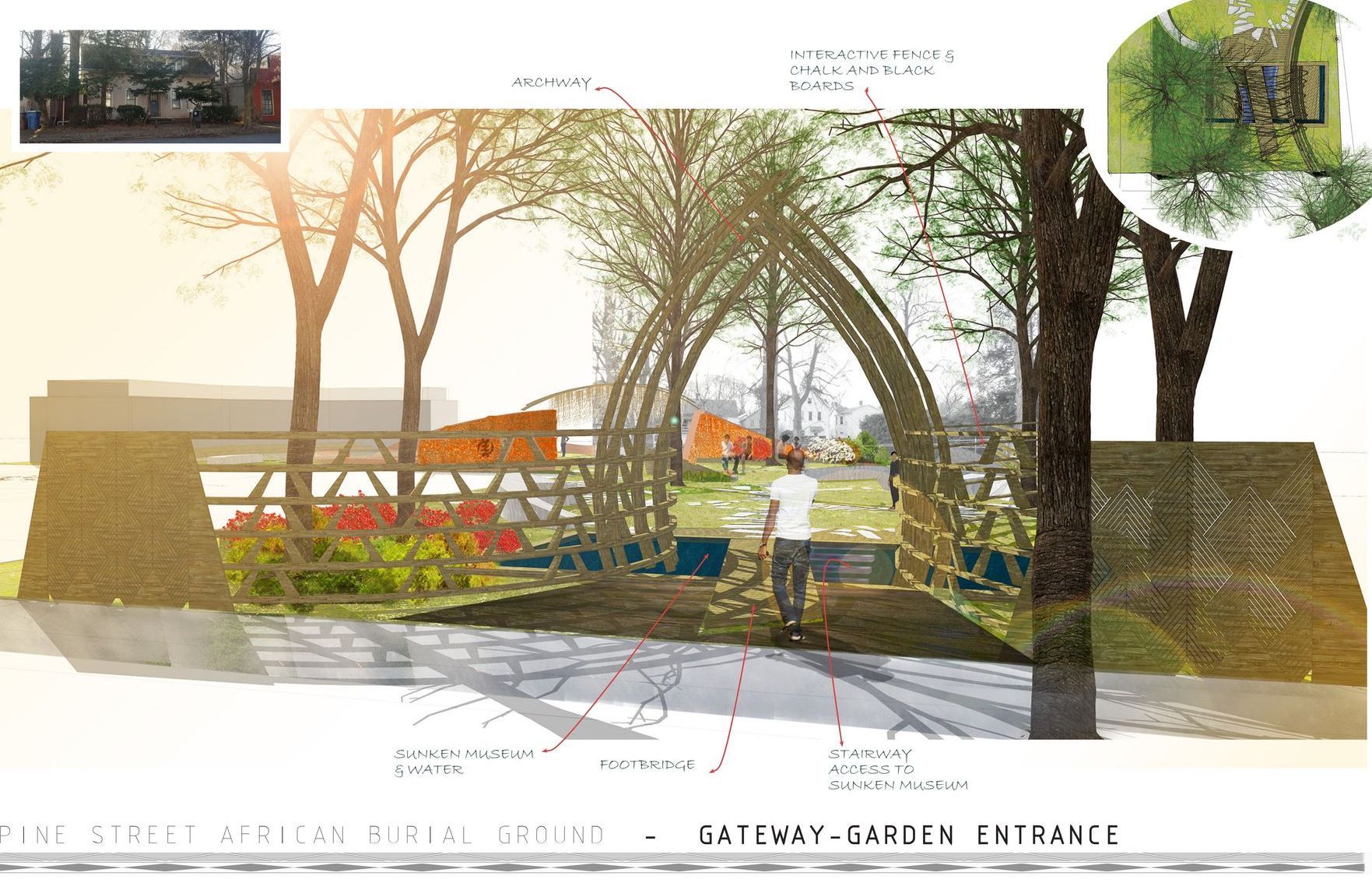Pine Street
AFRICAN BURIAL GROUND
AND MUSEUM
CELEBRATION . EDUCATION . PRESERVATION
~ African American Cultural Heritage ~
Kingston, NY
"This new policy is a cultural shift in our concepts of possession, ownership, and stewardship of collections. Its adoption is an expression of our values and commitment to meet our ethical obligations as a national and international cultural institution.”
- Secretary Lonnie G. Bunch III
Lineage to Legacy
Capitol Campaign For Progress
Watch your profits and efficiency soar. You’ll expand faster than you ever thought possible.
Preservation and Stewardship
We believe that all human remains must be treated with dignity and respect. We are committed to the appropriate care, shared stewardship, research use, or ethical return of human remains.
Tours and Learning Experiences
Join us at the Pine African Burial Ground and Museum for tours, demonstrations, lectures, and more. "Immersive cultural education leads to understanding our commonality"
Cultural Sensitivity and Mindfulness
DNA testing and facial reconstruction of remains from the Pine Street African Burial Ground hold significant value. They reconnect families with their ancestors, humanize history by visualizing faces, and preserve cultural heritage. These techniques offer educational opportunities, advance research, raise awareness, empower descendants, and promote justice. By bringing the past to life, they ensure the stories of the burial ground are remembered, honored, and contribute to broader discussions about equality and societal change.
History of the Pine Street African Burial Ground 1750-2024
Our support team is here to ensure everything runs smoothly, so you can focus elsewhere.
Pine Street African Burial Ground . Kingston, NY
Capital Campaign 2024 - 2025
Your Financial Support Is Valuable
This is the text area for this paragraph. To change it, simply click and start typing. Once you've added your content, you can customize its design.
Financial Goals
- Implement Youth Design for the Gateway Memorial Gathering Space
- Retaining local Architect, Consultants and professional contractors
- Brick and mortar building supplies and equipment
- Insurances, permits and licenses
- Youth Training Stipend
Projected Timeline
Estimated Budget: $500,000.00
Detailed budget available upon email request: info@harambeekingstonny.org
Important Informational Links
Capital Campaign Press Release
Current Donors and Stake Holders
2024 Harambee Kingston Annual Report
History of the Pine Street African Burial Ground 1750 - 2024
Youth Design Concept
Gateway Garden Entrance
Pine Street African Burial Ground

Youth Training & Community Engagement

Local Business Partnership

Immersive cultural education leads to understanding our commonality.
“This is the best company I have ever worked with. The service is friendly and the results are always of the highest quality.”
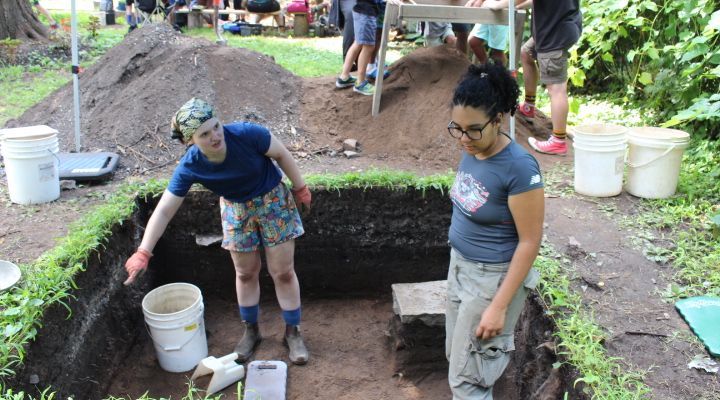
Students from SUNY New Platz - Department of Archeology Filed Class 2023
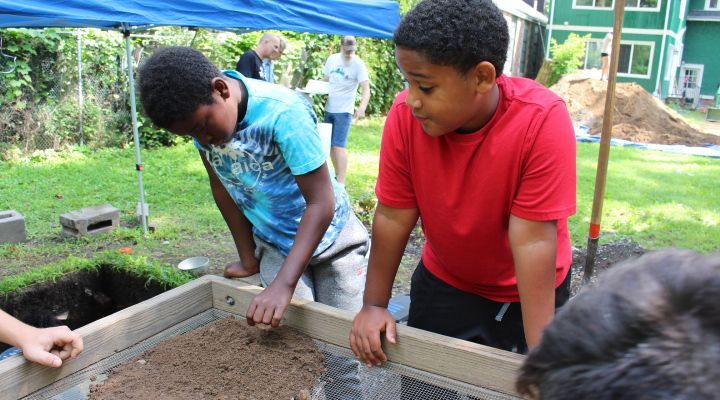
Young people learning about archeology - Summer Youth Program 2023
To know our past is to understand the present and prepare for the future
“I have tried other products that worked fine, but this one is certainly the best of them all. It brings efficiency to a new level of simplicity.”
It's Our Turn . Our Legacy
5 Great Reasons why we MUST Preserve the historic
Pine Street African Burial Ground in Kingston, NY
Honoring African and African American Cultural Heritage
The Pine Street African Burial Ground holds the sacred remains of enslaved Africans who played a significant role in shaping the local history and culture of Kingston, NY. Preserving this site ensures that their contributions are recognized, honored, and respected, allowing current and future generations to connect with their roots and cultural heritage.
Educational Significance
The burial ground provides a tangible link to the past, offering an invaluable educational resource for students, researchers, and visitors. By preserving the site, we create an opportunity to educate the public about the history of slavery, African American contributions, and the struggles faced by enslaved individuals. This serves as a powerful reminder of the importance of social justice and equality.
Community Healing and Reconciliation
The preservation of the Pine Street African Burial Ground contributes to healing and reconciliation within the community. Acknowledging the past injustices and honoring the lives of those who were marginalized fosters a sense of unity and understanding among diverse community members. It also provides a platform for open dialogue about racial equity and social change
Living Connections and Descendant Reconnection
Preservation efforts can lead to the identification and reconnection of living descendants of those buried at the site. This fosters a sense of identity and belonging, allowing families to connect with their ancestral roots. The site becomes a focal point for family reunions, shared narratives, and a deeper understanding of one's heritage.
Historical Authenticity and Documentation
The Pine Street African Burial Ground is a tangible piece of history that offers a genuine look into the lives of enslaved Africans in Kingston during a pivotal era. Preserving the site ensures that this historical authenticity is maintained for future generations. Archaeological findings, gravestones, and artifacts provide valuable insights into daily life, burial practices, and the resilience of enslaved individuals.
Methods Of Discovery and Preservation of African and African American History of Historic Kingston, NY
Through comprehensive efforts, the historical authenticity and documentation of the Pine Street African Burial Ground can be preserved for future generations, providing an insightful and genuine glimpse into the lives, experiences, and resilience of enslaved Africans in Kingston during a pivotal era of American history.
Archaeological Exploration and Documentation:
- Engage professional archaeologists and experts in African American history to conduct thorough surveys and excavations of the burial ground. Use non-invasive methods such as ground-penetrating radar (GPR) to identify potential burial sites.
- Document the site's layout, grave locations, and any structural features. Create detailed maps, sketches, and records that capture the exact positioning of artifacts and remains.
- Preserve the original context of the site by meticulously recording the relationships between different artifacts, grave markers, and structural elements.
Artifact Recovery and Analysis:
- Recover artifacts with utmost care, ensuring that each item is properly documented in terms of its location, orientation, and surroundings before removal.
- Establish a system for cataloging and storing artifacts in a climate-controlled environment to prevent deterioration.
- Collaborate with archaeologists, historians, and specialists to analyze the recovered artifacts. Study pottery, tools, personal items, and other objects to gain insights into daily life, cultural practices, and socioeconomic conditions of the enslaved community.
Preservation of Physical Remains:
- Implement conservation measures to protect and stabilize exposed grave markers, headstones, and any structural elements that are part of the burial ground.
- Document the condition of gravestones and markers using detailed photographs, written descriptions, and digital scans. Monitor changes over time to address potential deterioration.
Interpretation and Education:
- Develop educational programs, guided tours, and workshops that provide context for the burial ground's historical significance. Incorporate historical narratives, primary sources, and archaeological findings into the content.
- Create interactive exhibits that offer a sensory experience, allowing visitors to understand the lives of enslaved individuals through visual, auditory, and tactile elements.
- Collaborate with local schools and educational institutions to integrate the burial ground's history into curriculum, encouraging deeper engagement with the community.
Digital Documentation and Virtual Access:
- Use modern technology to create digital records of the site's layout, artifacts, and findings. This can include 3D models, virtual reality experiences, and online databases.
- Develop a user-friendly website or digital platform where visitors can access information, photos, videos, and interactive content related to the burial ground's history.
Community Engagement and Collaboration:
- Engage with local communities, historians, and descendants of those buried at the site. Seek their input, stories, and contributions to enhance the historical narrative.
- Organize public forums, workshops, and discussion panels that encourage open conversations about the site's history, its significance, and the broader context of African American history in the region.
Ongoing Monitoring and Maintenance:
- Establish a long-term preservation plan that includes regular site monitoring, artifact conservation, and maintenance of exhibits.
- Collaborate with heritage preservation organizations, museums, and academic institutions to ensure best practices are followed for the preservation of historical sites.
Stories Are Alive In The Bones . Ase!
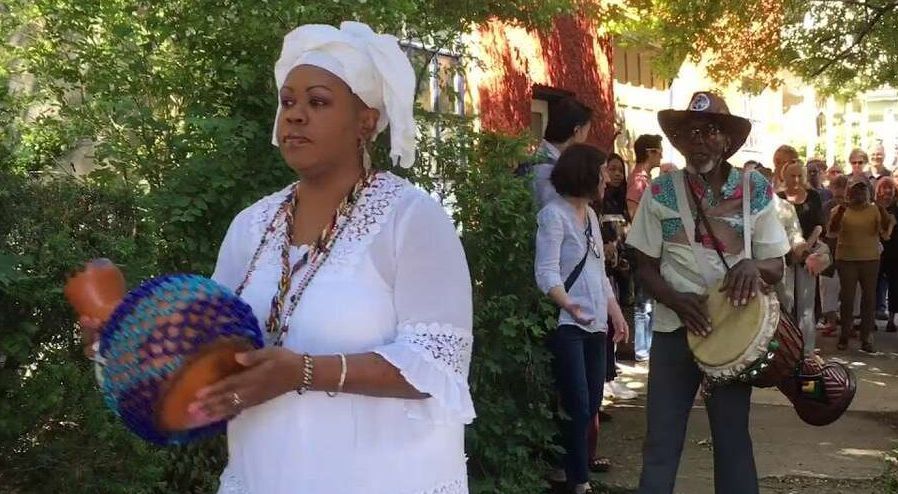

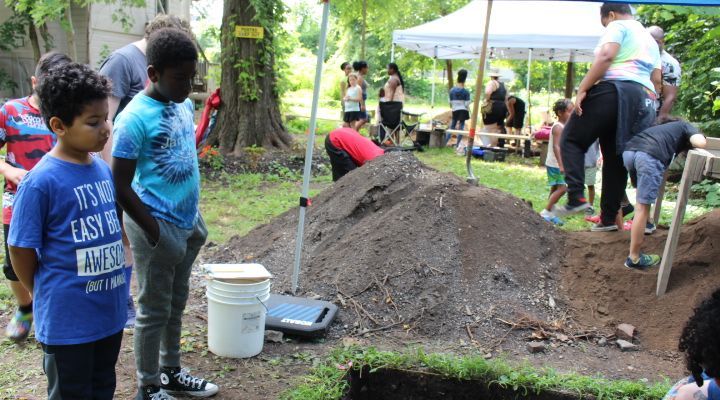
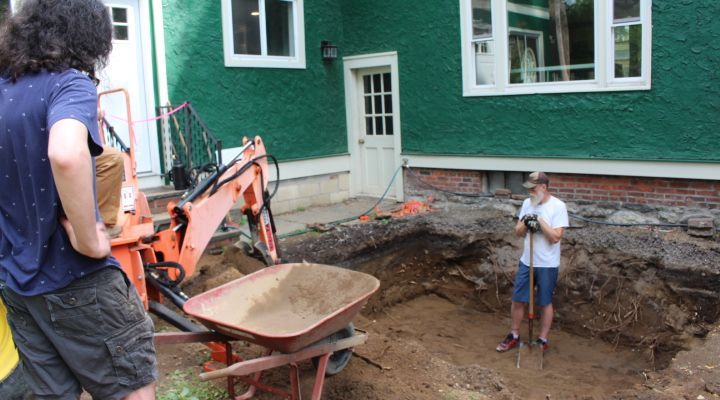
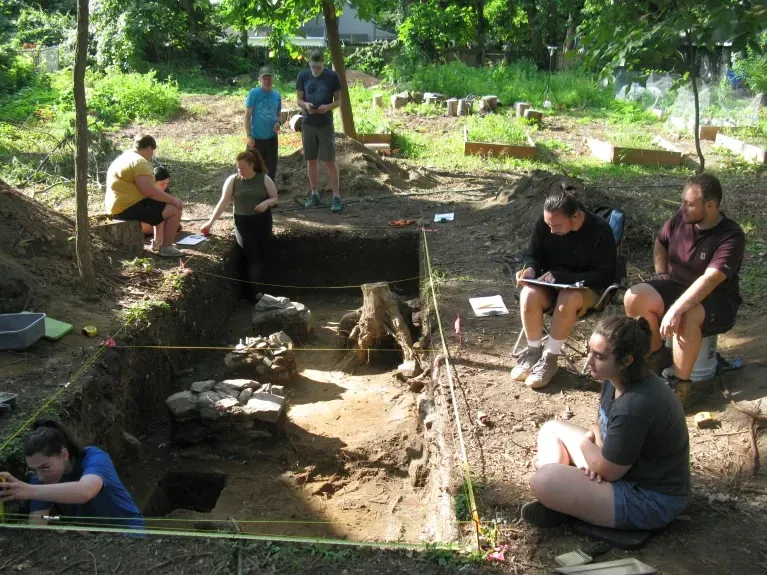
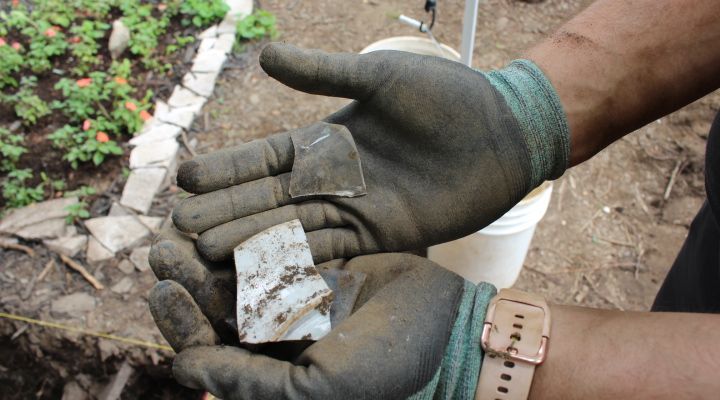
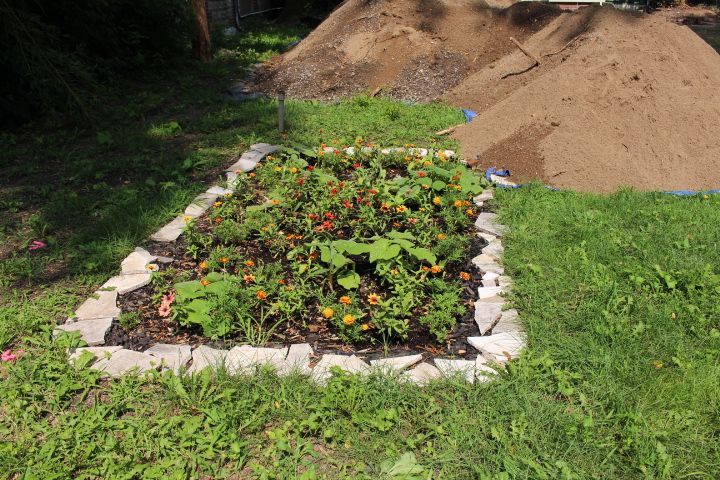
Stories Are Alive In The Bones . Ase!
Science to recover the stories of Ancestors and the living lineage.
DNA testing and facial reconstruction of the remains from the Pine Street African Burial Ground hold immense value and importance in shedding light on the lives, identities, and experiences of the individuals who were interred there. Here's why these techniques are significant:
Reconnecting with Ancestry
DNA testing allows us to trace genetic ancestry, potentially reuniting living descendants with their ancestors who were buried at the Pine Street African Burial Ground. This connection provides a profound sense of identity, belonging, and validation for families whose heritage was previously obscured by history.
Humanizing the Past
Facial reconstruction transforms skeletal remains into realistic visual representations of the individuals' appearances. This humanizes the past, transforming names and dates into relatable faces. By putting faces to history, we create empathy and understanding, making the past more tangible and relatable to present-day audiences.
Preserving Cultural Heritage
DNA testing and facial reconstruction honor the cultural heritage of the individuals buried at the site. It emphasizes that these were real people with unique stories, experiences, and connections. This recognition helps preserve the cultural memory of a community that has often been marginalized in historical narratives.
Educational Opportunities:
These techniques provide educational opportunities for schools, museums, and the broader community. Visual representations and genetic information can engage learners of all ages in discussions about ancestry, history, and the diverse contributions of African Americans to local and national heritage.
Advancing Research and Knowledge
DNA testing and facial reconstruction contribute to scientific understanding of historical populations. Genetic data can reveal insights into migration patterns, health conditions, and genetic diversity of the community. This information can be used to advance historical and anthropological research.
Raising Awareness
The application of DNA testing and facial reconstruction generates attention and awareness around historical sites like the Pine Street African Burial Ground. It draws public interest and support for preservation efforts, ensuring that the stories of these individuals are not forgotten.
Empowering Descendants
For descendants of those buried at the site, DNA testing and facial reconstruction can be empowering. It validates family stories, fills gaps in ancestral knowledge, and fosters a sense of pride in their heritage.
Justice and Reparations
Applying modern scientific techniques to the remains acknowledges the lives and dignity of the individuals who were once marginalized. It aligns with a commitment to justice and acknowledgment of past injustices, contributing to broader conversations about equality and social change.
In summary, DNA testing and facial reconstruction are invaluable tools that breathe life into history, fostering connections, empathy, education, and understanding. They amplify the voices and experiences of those who were silenced by history and offer a tangible way to honor and preserve the legacy of the Pine Street African Burial Ground.
WE ARE THE ONES WE'VE BEEN WAITING FOR
Preserve Our Heritage:
Your donation safeguards the Pine Street African Burial Ground, preserving the powerful stories of enslaved Africans who shaped our community.
Educate Through History:
Support education initiatives that inspire future generations to understand and learn from the struggles and triumphs of the past.
Reconnect Families:
Contribute to reuniting living descendants with their ancestral roots and fostering a sense of identity and belonging.
Respect and Restorative Justice:
By preserving this sacred ground, we declare our commitment to honoring the past and building a future based on respect and equality.
Make History Together: Be part of a transformative journey, leaving a lasting impact on how we remember and understand our shared heritage.
Your Donation Matters: Every contribution directly shapes the preservation, research, and education efforts of the Pine Street African Burial Ground. Join us in making a difference today.
Make a one time Donation or re-accursing Donation via Harambee Kingston PayPal.
For questions or more information, please contact us at 845-853-8443 or info@harambeekingstony.org
To send a check, please make payable to "Harambee, Inc. and write
"PSABG" in the memo line. You may mail to:
Harambee Kingston New York
157 Pine Street
Kingston, NY 12401
Preserve Our Heritage:
Your donation safeguards the Pine Street African Burial Ground, preserving the powerful stories of enslaved Africans who shaped our community.
Educate Through History:
Support education initiatives that inspire future generations to understand and learn from the struggles and triumphs of the past.
Reconnect Families:
Contribute to reuniting living descendants with their ancestral roots and fostering a sense of identity and belonging.
Respect and Restorative Justice:
By preserving this sacred ground, we declare our commitment to honoring the past and building a future based on respect and equality.
Make History Together: Be part of a transformative journey, leaving a lasting impact on how we remember and understand our shared heritage.
Your Donation Matters: Every contribution directly shapes the preservation, research, and education efforts of the Pine Street African Burial Ground. Join us in making a difference today.
Here's How You Can Help Harambee
Build A Living Legacy At The PSABG
Your gift to the PSABG supports research, the creation of world-class exhibitions, and award-winning educational programs for everyone. We are the largest African Burial Ground in the Mid-Hudson Valley, NY and we rely on people like you to help us continue to lead the way in understanding our African Ancestors and our African American cultures.
Together we can make an sustainable impact
Donate and Sponsor
- Visit the official campaign website to make a donation online.
- Choose a donation amount that fits your budget and commitment level.
- Explore options for one-time donations or monthly contributions.
Volunteer
- Reach out to the campaign organizers to express your interest in volunteering.
- Participate in community workdays for site maintenance, clean-up, and landscaping.
- Engage in events and workshops that require volunteer assistance.
Offer In-kind Professional Services
- If you possess skills such as archaeology, conservation, or historical research, offer your expertise to the project.
- Collaborate with campaign organizers to identify areas where your skills can contribute effectively.
Community Partnerships
- If you represent a local business or organization, explore potential partnerships with the campaign.
- Discuss opportunities for joint events, fundraisers, or awareness campaigns that mutually benefit both parties.
Spread Awareness and Engage
- Share campaign updates and information on social media platforms to raise awareness.
- Encourage friends, family, and colleagues to get involved by donating, volunteering, or spreading the word.
- Attend community meetings and workshops to stay informed and actively participate in discussions about the project.
Donations and your support no matter how small, contributes to the collective effort of preserving and developing the Pine Street African Burial Ground and Museum.
Your involvement can make a meaningful impact on the site's restoration, education, and cultural significance. ASE!
Make a one time Donation or re-accursing Donation via Harambee Kingston PayPal.
For questions or more information, please contact us at 845-853-8443 or info@harambeekingstony.org
To send a check, please make payable to "Harambee, Inc. and write
"PSABG" in the memo line. You may mail to:
Harambee Kingston New York
157 Pine Street
Kingston, NY 12401
A Glossary Of Terms
- Preservation: The act of maintaining and protecting something, such as a historical site, to prevent its decay or destruction.
- Heritage: Cultural and historical aspects that are passed down from previous generations and have significance for a community.
- DNA Testing: Analyzing an individual's DNA (genetic material) to determine their ancestry, familial relationships, and genetic traits.
- Facial Reconstruction: The process of recreating the appearance of an individual's face based on skeletal remains or other physical evidence.
- Archaeological: Relating to the study of human history through the excavation and analysis of artifacts, structures, and remains.
- Descendants: People who are directly related to a person or group of people from the past.
- Ancestral Roots: The origins and lineage of one's family, often traced back through generations.
- Cultural Heritage: The shared traditions, customs, beliefs, and artifacts that are significant to a particular group of people.
- Empowerment: Enabling individuals or groups to gain confidence, control, and influence over their own lives or circumstances.
- Community Engagement: Involving members of a community in activities, discussions, and initiatives that impact their shared environment or interests.
- Ethical Practices: Conducting actions that are morally right and respectful, especially when dealing with sensitive or historical matters.
- Interdisciplinary: Involving different academic disciplines or fields of study to address complex issues.
- Archival Documentation: Creating records and documentation to preserve historical information for future reference.
- In-kind Professional Services: Non-monetary contributions in the form of services, skills, or expertise.
- Educational Outreach: Efforts to share knowledge, information, and educational opportunities with a wider audience.
- Awareness Campaigns: Initiatives to increase public knowledge and understanding of a particular topic or cause.
- Partnerships: Collaborative relationships formed between individuals, organizations, or groups to work towards common goals.
- Social Change: Significant shifts in societal norms, attitudes, and behaviors that lead to improvements in various aspects of life.
- Restorative Justice: An approach to addressing harm and conflict that focuses on repairing relationships, facilitating healing, and promoting accountability.
- Ase: A term often used in African spiritual and cultural contexts, representing the power and life force that connects everything in the universe.
- Glossary: A list of terms and their definitions to help understand specific terminology.


